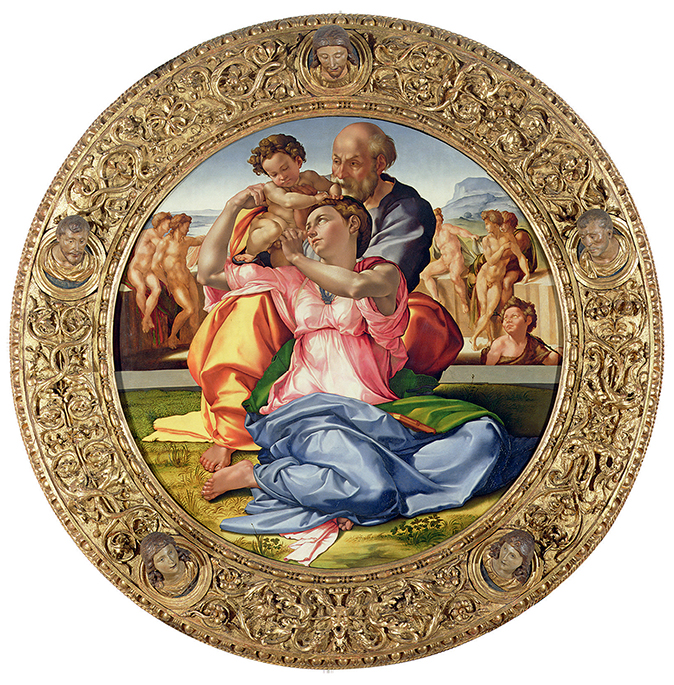My favourite painting: Timothy Potts
'It is miraculous good fortune that this 500-year-old painting by one of the greatest of all artists should survive in nearly perfect condition.'


The Holy Family with the Infant St John the Baptist (the Doni Tondo),1506, by Michelangelo (1475–1564), 47½in diameter, Uffizi, Florence
Timothy Potts says: It is miraculous good fortune that this 500-year-old painting by one of the greatest of all artists should survive in nearly perfect condition. Seeing the boldness of its colouring intact, the modelling of the flesh still as perfect as polished marble and every line just as sharp or blurred as the artist intended makes us realise how little of Renaissance painting can today be appreciated in anything approaching its original glory. Typically idiosyncratic of Michelangelo is the awkwardness of Mary’s gesture in handing the squirming Christ Child over her shoulder to Joseph, yet which, when translated into paint, he makes seem so natural and effortless— as, indeed, he somehow does with almost everything he touches.
Timothy Potts is the director of the J. Paul Getty Museum in Los Angeles.
John McEwen comments on The Holy Family with the Infant St John the Baptist: By 1506, Michelangelo was so famous that the Sultan of Turkey asked him to build a bridge across the Bosphorus. From the age of 26, and already known for the Pietà, David and other masterpieces, he was never short of commissions. It meant he was relieved of collaboration, contractual competition or a workshop churning out replicas. This independence suited his noble heredity; most Renaissance artists were sons of tradesmen. Michelangelo took pride in his aristocratic heritage and that he never repeated a work: ‘better to make a mistake’. It bolstered the supreme talent that meant he could name his own terms. He refused the Sultan.
It was typical of his consuming need for mastery—perhaps, too, of a desire to challenge the older Leonardo, his fellow Florentine—that, despite having done little painting, he should create a masterpiece with this tondo (‘round’) picture, his only known use of age-defying egg tempera.
Tondi were popular status symbols. This one was commissioned by the nouveau riche Agnolo Doni, husband of Maddalena Strozzi, whose family, ‘the most illustrious…Florence had ever known’, were among Michelangelo’s earliest patrons. The nude figures echo Classical statues. They represent the pagan past, divided from enlightened Christianity by a wall over which the young John the Baptist is about to climb. He would launch Christ’s public ministry as Mary had his earthly life.
A major altarpiece cost 40 ducats. Doni agreed to pay Michelangelo 70. On receipt, he paid 40. Michelangelo, incensed, demanded 100 or return of the picture. Doni agreed. Michelangelo billed him for 140. Doni paid. 
Exquisite houses, the beauty of Nature, and how to get the most from your life, straight to your inbox.
Country Life is unlike any other magazine: the only glossy weekly on the newsstand and the only magazine that has been guest-edited by His Majesty The King not once, but twice. It is a celebration of modern rural life and all its diverse joys and pleasures — that was first published in Queen Victoria's Diamond Jubilee year. Our eclectic mixture of witty and informative content — from the most up-to-date property news and commentary and a coveted glimpse inside some of the UK's best houses and gardens, to gardening, the arts and interior design, written by experts in their field — still cannot be found in print or online, anywhere else.
